
Released 40 years ago, Talking Heads’ fifth album was a firm fixture in Larry Levan’s tastemaking Paradise Garage record bag. A stone-cold new wave disco classic filled with now-iconic hits, it spread through New York’s clubs like wildfire. Here, Ben Cardew learns how ‘Speaking In Tongues’ enshrined one of the era’s least classifiable bands on dancefloors forever
The term “dance-punk” is a slippery one. Since emerging in the late ‘70s, thanks to bands like Liquid Liquid and ESG in New York and Gang of Four in the UK, who mixed punk’s snarl with disco’s rhythm, it’s been brandished quite liberally, at times to a point of obfuscation. It had a notable revival in the 2000s, through acts like Yeah Yeah Yeahs, LCD Soundsystem, The Rapture and wider DFA ilk. But for all the genre’s broad-yet-niche appeal, you can count the number of punk-adjacent bands who’ve made genuine dance hits — whose impact was felt in clubs, gig venues and the charts — on one hand. At least a tendon of that needs to be given over to Talking Heads, the NYC outfit who rose from the grot of the city’s CBGB underground to create club anthems of the Larry Levan gold standard.
‘Speaking In Tongues’, the band’s fifth studio album, which celebrates its 40th anniversary this year, was key to their dancefloor success: a stone-cold new wave disco classic that was all over New York’s clubs in 1983, from the Paradise Garage to the no-wave venue, The Mudd Club. “I mean, you could just put on the album and go home,” says Justin Strauss, a New York DJ, remixer and producer since the early 1980s, who was resident at the latter. “You have ‘Burning Down The House’, ‘Slippery People’, ‘Girlfriend Is Better’, ‘This Must Be The Place’ — it’s just crazy. All the songs now are so iconic.”
Bill Bahlman, who was resident DJ at New York’s Hurrah and Danceteria clubs in the early ‘80s, and ran the New Wave Nights at The Anvil, agrees. “‘Burning Down The House’ [‘Speaking In Tongues’’ first single and Talking Heads’ only US top 10 hit] was a noisy song, not completely unlike other tracks by Talking Heads, but it was loud,” he says. “It was in your face. It was demanding attention from people on the dancefloor. And people got into it.”
This kind of brashness chimed with the New York of the early 1980s, where crime was skyrocketing, rent was low, and oddball creativity was in the air, from the graffiti-inspired street art of Keith Haring to Jean-Michel Basquiat’s neo-expressionism. Bahlman says that New York night life at the time was “a little bit dangerous in terms of walking the streets late at night”. “But it was also intense,” he adds. “The clubs became that much more, I wouldn’t say insular, but more intense because of what was going on outside.”
The undisputed king of New York DJs in the early 1980s was Larry Levan, who started a residency at the Paradise Garage in 1977 that lasted for a decade. Levan had ocean-wide musical tastes, spinning disco, funk, house, garage, punk, krautrock and pop, all while incorporating the technical influence of dub into his sound. He was also a Talking Heads fan. In their 2000 book, Last Night A DJ Saved My Life, Bill Brewster and Frank Broughton listed 100 Paradise Garage classics, in which Talking Heads feature twice, alongside their offshoot band, Tom Tom Club, who appear once.
Thanks to these dance music historians, we also know that Levan spun no fewer than four ‘Speaking In Tongues’ tracks at the Paradise Garage: ‘Burning Down The House’, ‘Slippery People’, ‘Swamp’ and ‘This Must Be the Place (Naive Melody)’. “Larry was regarded as the major DJ of New York,” says Strauss. “When he started playing it [‘Speaking In Tongues’], other DJs followed, who might not have played it before.”
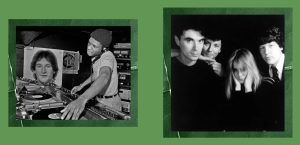
“Larry was regarded as the major DJ of New York. When he started playing it [‘Speaking In Tongues’], other DJs followed, who might not have played it before.” — Justin Strauss
Talking Heads — aka Chris Frantz, Jerry Harrison, Tina Weymouth and David Byrne, four nerdy-looking art school students who moved to New York in the 1970s — were unlikely dancefloor fillers. The band were not just one of the artiest groups to come out of the city’s punk scene of the time; they are one of the most bizarre and non-placeable bands ever to hit mainstream attention. New wave fans will know them from their classic 1977 single, ‘Psycho Killer’; ‘80s pop connoisseurs will recognise their rolling 1985 European hit, ‘Road To Nowhere’; hip-hop heads will have bobbed their necks to the Afrobeat-inspired ‘Once In A Lifetime’, a still-ubiquitous song that has been sampled by artists from Memphis Bleek and Jay-Z to Pete Rock and C.L. Smooth. Beyond that, the band dabbled in art rock, p-funk and much, much more.
Whatever Talking Heads did, the dancefloor was never far from their thoughts. Weymouth, the band’s bass player, once explained that when they started, “we called ourselves Thinking Man’s Dance Music” and — perhaps more than any other rock band of their generation — they understood the power of a groove, even as their music mutated and evolved.
Debate may rage over which album is Talking Heads’ best: 1979’s ‘Fear Of Music’ and 1980’s ‘Remain In Light’, both produced by Brian Eno, are strong contenders. But ‘Speaking In Tongues’ is almost certainly their most club-friendly — full of Frantz’s propulsive disco drum grooves, Harrison’s itchy guitar funk, Weymouth’s tightrope-tight bass lines and Byrne’s dance-chant vocals. Notably, the album also features French musician Wally Badarou and Parliament-Funkadelic founder Bernie Worrell on keyboards, as well as Labelle’s Nona Hendryx on backing vocals. The latter two were also part of the band’s touring line up.
Ironically, given his role as an electronic music pioneer, Eno’s parting of ways from Talking Heads may have helped the band’s journey towards disco. Eno had produced the band’s second, third and fourth albums, but his increasing involvement with the group created tension, and they parted company after ‘Remain In Light’. The result was a lightening of the atmosphere around Talking Heads, which bled into their creative process. As David Bowman famously wrote in his Talking Heads biography, This Must Be the Place: “They still appeared more Addams Family than Brady Bunch but they no longer seemed to be embittered.”
Talking Heads started work on ‘Speaking In Tongues’ at New York’s Blank Tape studio with engineer Butch Jones — who “was very much into disco music and doing commercials”, Harrison told the Pitchfork Podcast — at the controls.
It helped that, by the time they came to record ‘Speaking In Tongues’, Frantz and Weymouth were in red hot form, having taken advantage of a Talking Heads hiatus after ‘Remain In Light’ to form Tom Tom Club, a visionary new wave-funk group whose eponymous 1981 album birthed dance classics in ‘Wordy Rappinghood’ and ‘Genius Of Love’, which has since been sampled by everyone from Mariah Carey to Public Enemy.

“It’s timeless, actually, and that’s always the mark of a great record. It doesn’t matter when it was made, you could still play it and it still sounds fresh and you’re always hearing new things.” – Justin Strauss
It would be wrong to lay the inspiration for ‘Speaking In Tongues’ solely at Frantz and Weymouth’s feet, but it is hard to hear the transition from ‘Remain In Light’’s brilliantly scattergun grooves to ‘Speaking In Tongues’’ clipped funk without thinking of Tom Tom Club’s interregnum. Talking Heads were always funky, but on ‘Remain In Light’ this was chaotic. On ‘Speaking In Tongues’, the music was stripped back and linear, better suited to the dancefloor. By this point, the band had learned that everything didn’t have to be ON at all times; they could place sounds, effects and punchy riffs within little windows in their arrangements, where they could float to the front to grab listener’s attention.
You can hear this in particular on ‘This Must Be The Place (Naive Melody)’, the album’s second best-known song, in which bass, drums and guitar lock into a groove that is metallic in its solidity yet oddly care free, serving as a platform for teetering traces of Prophet synthesiser. The result, according to Strauss, was “very club friendly grooves”. A lot of the stuff [on ‘Speaking In Tongues’] is played live,” he adds. “So it’s not exactly on the grid. Things go off time and things are not perfect. And that’s part of the charm about it.”
‘Speaking In Tongues’ dancefloor power endures today. There have been numerous re-edits of songs, including Late Nite Tuff Guy’s burbling ‘Burning Down The Acid House’, Razor-N-Tape’s JKriv’s strutting take on ‘Girlfriend Is better’, and a Psychemagik edit of ‘This Must be The Place (Naive Melody)’. ‘Burning Down the House’ has also been remixed by Todd Edwards and covered by Tiga. Strauss says he does often reach for these edits when he is DJing. “But sometimes it’s just the original! Just throw it on and it does its thing, you know?”
Rocky, the British DJ and X-Press 2 member who worked with David Byrne on the band’s 2002 hit ‘Lazy’ — which we went deep on here — calls Talking Heads “one of the funkiest, quirkiest bands to come out of that whole post-punk period in New York”. “Such an incredible body of work and, alongside ‘Remain In Light’, ‘Speaking in Tongues’ is a huge favourite,” he adds. “So many classic tunes in the one place and so lovely to hear David cover some of these for his American Utopia [Broadway] project recently. Imagine how blown away we were to actually get to work with a genuine musical hero and huge influence on everything that we’ve done.”
“I still play Talking Heads in a lot of my sets,” Strauss concludes. “And it fits in perfectly. I think it’s timeless, actually, and that’s always the mark of a great record. It doesn’t matter when it was made, you could still play it and it still sounds fresh and you’re always hearing new things. There’s a lot of things going on in these records. And that’s the beauty of it.”
The beauty, the funk, and a whole lot more. 2023 has been bursting with rumours of a Talking Heads reunion, after the group’s four members appeared together to promote a reissue of their classic concert film, Stop Making Sense. Should they do so, you can bet that ‘Speaking in Tongues’, the disco album from the punks of Paradise Garage, will play a huge role in making the dancefloors vibrate like the New York of the ‘80s.
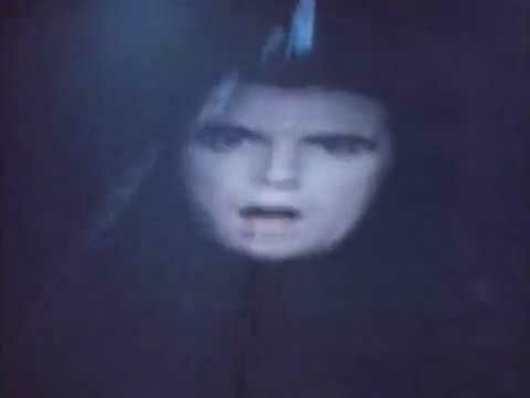
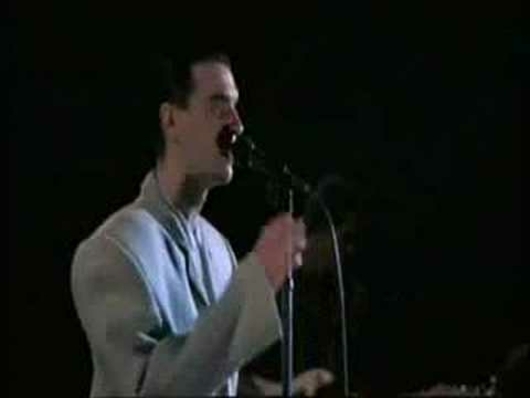
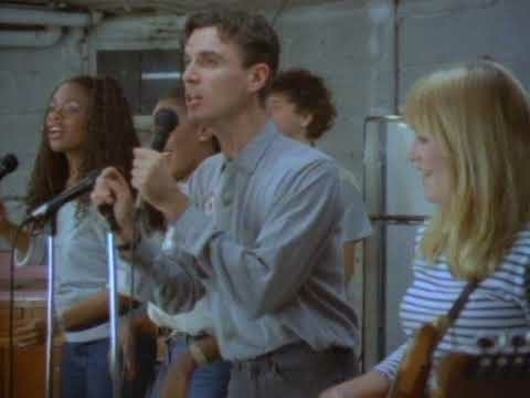
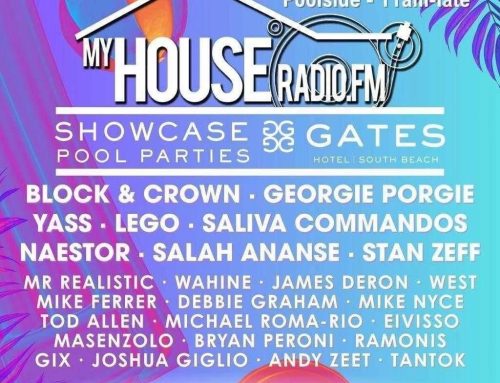




Leave A Comment
You must be logged in to post a comment.